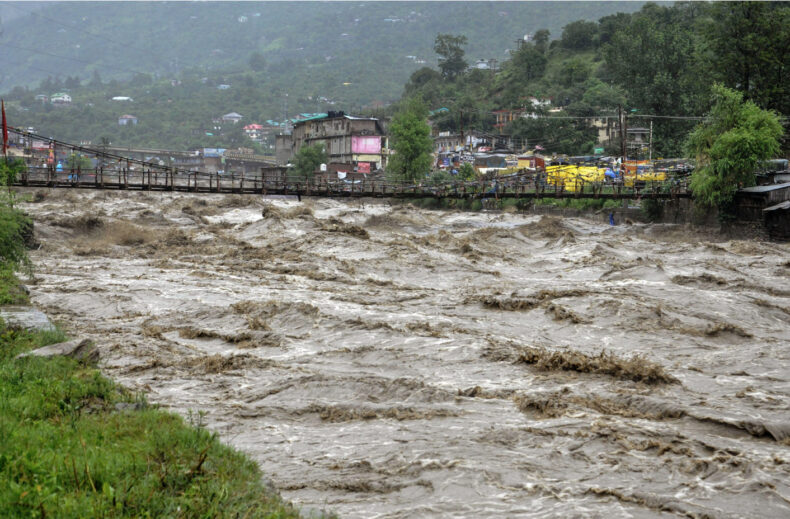Relentless heavy rains have wreaked havoc in North India, causing widespread landslides and flash floods. Himachal Pradesh, one of the worst-hit states, has witnessed the tragic loss of 91 lives. The state is grappling with the aftermath of the disaster, as over 1000 roads remain closed and more than 5000 water supply schemes have been damaged. The Indian Meteorological Department (IMD) has issued a forecast for heavy rainfall in the region starting from July 14. The situation demands urgent attention and coordinated efforts to mitigate the devastating impact of the calamity.
Unleashing Destruction:
The torrential downpours have triggered flash floods and landslides, resulting in significant destruction across Himachal Pradesh. The government officials’ data reveals that out of the 91 reported deaths between June 24 and July 13, 34 were caused by landslides, cloudbursts, and flash floods. With over 1000 roads closed and more than 5000 water supply schemes damaged, the state is facing immense challenges in terms of infrastructure and basic amenities.
Government Response and Evacuation Efforts:
The Chief Minister of Himachal Pradesh, Sukhwinder Singh Sukhu, has been actively involved in rescue and relief operations. He flew in an Indian Air Force helicopter to evacuate stranded tourists from Sangla to Shimla. The government has also announced financial aid of one lakh rupees to the affected families and has taken steps to channel the Thunag rivulet to prevent future mishaps. Evacuation efforts have been commendable, with more than 50,000 tourists successfully rescued and relocated to safer areas.
Foreign Nationals Stranded:
The calamity has not spared foreign nationals visiting the region. The Israeli Embassy and Himachal Pradesh authorities collaborated to ensure the safety of stranded Israeli tourists. A total of 37 Israelis were safely evacuated from Barshaini, while six were transferred to PP Manikaran. Additionally, all tourists stranded at Chandra Taal Lake, a popular tourist attraction, have been successfully brought to safety.
Collaboration and Assistance:
Efforts to combat the crisis have seen collaboration between various government departments and agencies. The National Disaster Response Force (NDRF) and State Disaster Response Force (SDRF) have been coordinating their operations. The central government has extended support to Himachal Pradesh in terms of rescue operations and infrastructure rehabilitation. The state is also seeking assistance from the Central Government to compensate for the extensive damages caused by the monsoon.
Extended Monsoon Holidays:
In light of the grim situation and continuing heavy rainfall, the Himachal Pradesh Education Minister, Rohit Thakur, has extended the monsoon holidays for schools until July 16. This decision aims to ensure the safety of students and provide time for the state to recover from the ongoing crisis.
Looking Ahead:
As the rains persist and the region braces for further downpours, it is crucial to prioritize relief efforts, restore essential services, and focus on long-term resilience measures. The government must allocate resources for infrastructure reconstruction, repair damaged roads, and rehabilitate affected communities. Early warning systems and improved disaster preparedness measures should be implemented to mitigate the impact of future monsoon seasons.
The relentless heavy rains in Himachal Pradesh have unleashed devastation, leading to loss of life, damaged infrastructure, and disruption of essential services. The state government, along with central agencies, has been actively engaged in rescue and relief operations, successfully evacuating thousands of stranded tourists. A concerted effort is required to rebuild infrastructure, provide support to affected communities, and implement measures to prevent and mitigate the impact of such disasters in the future.













